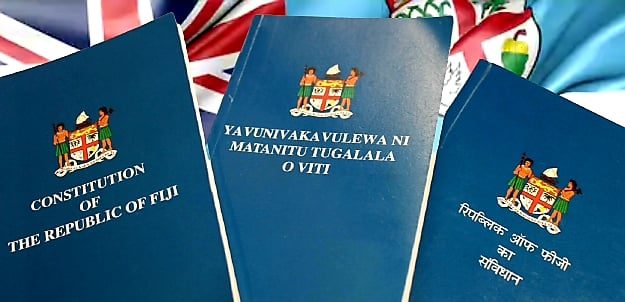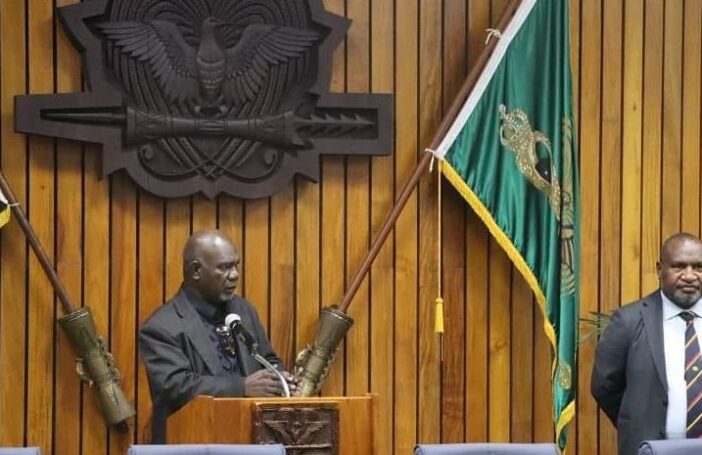Fiji’s 1997 Constitution is no more. The Supreme Court’s opinion of 29 August has effectively buried that foundational law. Judges were given little choice. They were asked by government to deliberate on matters under the 2013 Constitution (Section 91(5)), a reference which only made sense if that later 2013 Constitution was operative. That was the source of their jurisdiction. Without that, they had no powers to act. Section 91 allowed the government to seek legal clarity from the Supreme Court about whether and how the 2013 constitution could be amended either through a vote on the floor of parliament or through a majority in a referendum. At the last moment, a question about the status of the 1997 Constitution was dropped into the list of questions put before the Court.
What followed was immensely odd. Submissions from the two predominantly indigenous-backed political parties, the People’s Alliance and the Social Democratic Liberal Party (SODELPA), favoured resurrection of the 1997 Constitution, while the submission of the National Federation Party (NFP) accepted its demise. This was a big change from the 1990s. Back then, it was the predominantly indigenous-backed parties who railed against the 1997 Constitution. Prime Minister Sitiveni Rabuka may have brokered the 1997 deal with his then coalition ally NFP leader Jai Ram Reddy, but the new legal framework was rejected by many within Rabuka’s own Soqosoqo ni Vakavulewa ni Taukei party. Hostility to the 1997 Constitution was a key reason for the splits in the indigenous vote witnessed at the 1999 general election.
By contrast, the 1997 Constitution was, in critical respects, the NFP’s baby. Its representative on the Constitutional Review Commission, the late Dr Brij Lal, was a key player in the negotiations. The subsequent addition of a power-sharing clause, the so-called multi-party cabinet provision, was greatly influenced by the stance taken by Reddy and other senior NFP figures, including Dr Wadan Narsey.
A primary focus of George Speight’s coup in May 2000 was to bring down the 1997 Constitution in the name of indigenous rights. He claimed that constitution was a millstone around the neck of the ethnic Fijians. But it was Frank Bainimarama who formally abrogated that 1997 constitution on 29 May 2000.
Some months later, then High Court judge Anthony Gates ruled that the Commander was acting under the “doctrine of necessity”, meaning that he was acting outside the 1997 Constitution but in order to protect it. That was a generous interpretation.
The Court of Appeal judges who deliberated on the Chandrika Prasad case in early 2001 could not agree with Justice Gates. The reason was that they had before them an affidavit from Bainimarama making it clear that he wanted to destroy the 1997 Constitution. The judges, who had all sworn their oaths of allegiance under the 1997 Constitution, resurrected that foundational law.
Despite being battered and bruised, the 1997 Constitution survived until Easter 2009. When Bainimarama overthrew the Laisenia Qarase-led government in December 2006, he at first claimed to be operating within the constitution. It was a “clean-up campaign”, he insisted: this time it was explicitly justified under the “doctrine of necessity”. By Easter 2009, that position had become unsustainable. Those New South Wales judges who parachuted in to sit on the Court of Appeal pronounced Bainimarama’s government illegal. The next day, the 1997 Constitution was formally abrogated. Fiji was left in a legal vacuum.
Only in 2012 did the Bainimarama-led government take steps towards establishing a new Constitution, but even that proved unacceptable. The Yash Ghai-led Fiji Constitutional Commission saw the galley proofs for its draft Constitution symbolically burnt at the government printers. Instead, the then Attorney-General drew up his own 2013 Constitution and then imposed this on the people of Fiji. The judges sitting on the Supreme Court in August 2025 rightly saw this as an outrageous and undemocratic imposition on the people of Fiji.
There are plenty of reasons for shedding no tears about the demise of the 1997 Constitution. Its electoral system, the alternative vote, was a shambles. It generated exceptionally large numbers of invalid votes. It failed to generate the “moderate” politics it was constructed to deliver. Its multi-party cabinet provisions were badly drafted, particularly as regards the composition of the Senate.
To resurrect that 1997 Constitution in 2025 would have meant a return to communal seats, distributed in a highly unfair manner given subsequent demographic changes. Each ethnic community would have had a veto over any changes to its seat allocations. A return to the 1997 Constitution would have meant a restoration of Fiji’s upper house. It would have restored the powers of the Great Council of Chiefs to appoint the President. The judges sitting on the Supreme Court found that too much time had elapsed, and too many legal changes had been made, to warrant a reversion to that earlier legal framework.
Despite its many flaws, the 1997 Constitution was a noble construction. Not many deeply divided countries around the world see the leaders of two peoples come together to agree on their foundational laws in the aftermath of severe polarisation. The 1997 Constitution was a compact. It was an agreement to share power. It was intended to put an end to the antagonisms that had erupted into the 1987 coup. No longer would the major Fiji Indian-backed parties be consigned to perpetually sit on the opposition benches, as had been the case from 1970 to April 1987 and from May 1987 until the introduction of that new legal framework in 1997. It may have ended in failure, owing to the Speight coup of May 2000, but that does not detract from the righteousness of its objectives.
Why then the change of heart by the National Federation Party? Why have the old positions been so entirely reversed? Before the Supreme Court, the lawyer for the NFP, Jon Apted, argued that the demographics of Fiji had “changed dramatically”, that the old communal divisions no longer shaped the political parties and that the issues that underpinned the “compromises that were made in the 1997 constitution no longer exist”. This is not a verdict shared by all.
Many have defended the 2013 constitution’s 75% majority of registered voter requirements precisely on the grounds that only such a high threshold could give the Fiji Indian minority a veto over constitutional change. That is yet another great paradox about contemporary Fiji. Those who most vociferously uphold the virtues of the 2013 Constitution’s commitment to a “common and equal citizenry” nevertheless simultaneously preferred to calibrate its amendment provisions to guarantee communal protections. The Supreme Court judges did not agree and, critically, read down the 75% majority to a simple majority in a referendum.
Whether or not Fiji has truly moved on from the old communal divisions will be tested at the next general election. Unlike those of 2014, 2018 and 2022, the forthcoming election will no longer centre on support or opposition to the 2006 coup. It would be premature to anticipate that Fiji’s politicians will shun communal perspectives and abstain from playing the race card. On the contrary, some are already appealing to “the fears and apprehensions of the Fiji-Indian community” whereas others want to re-empower neo-traditional institutions. The 1997 Constitution may be dead and buried, but the country still needs a resurrection of the spirit of inter-communal compromise that underpinned it.




